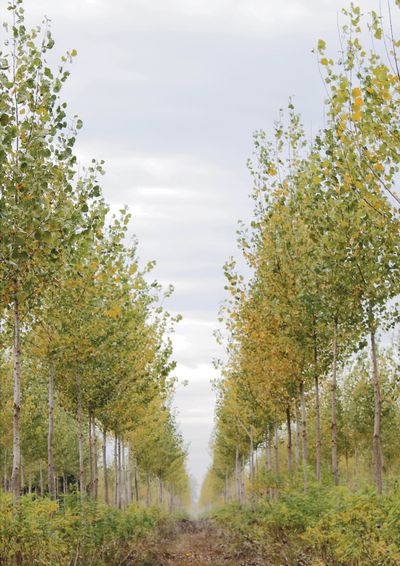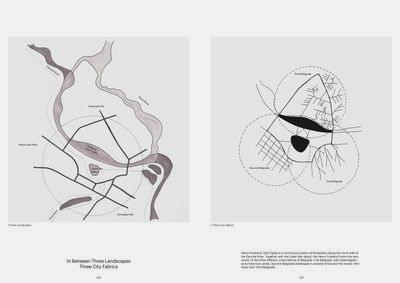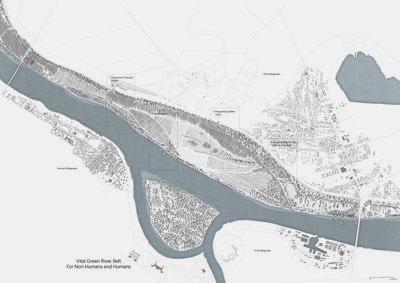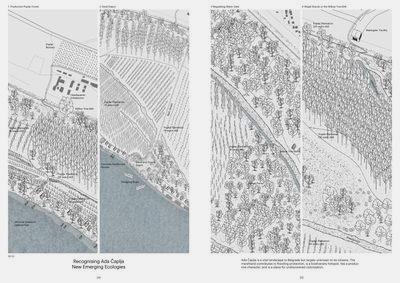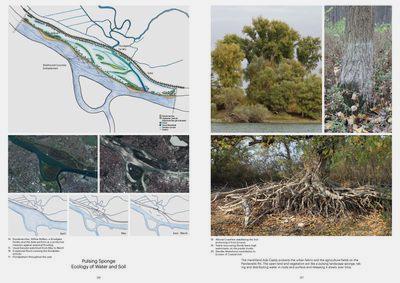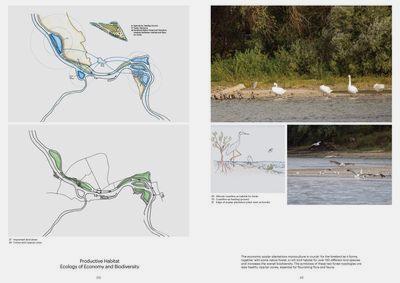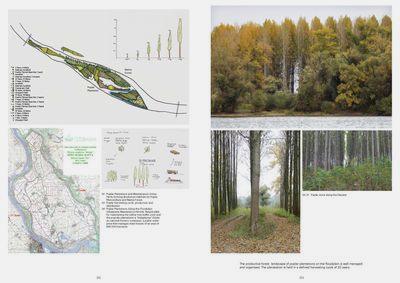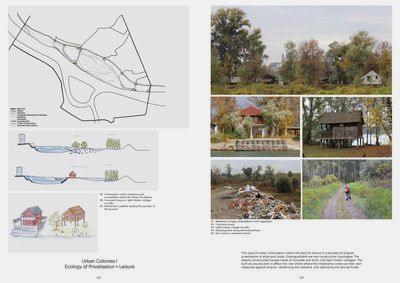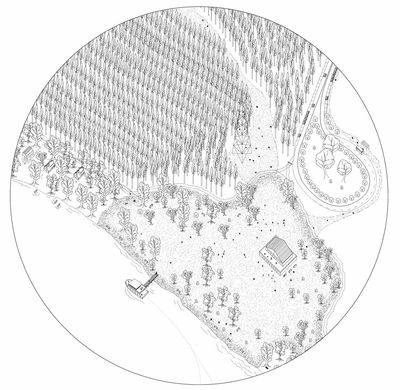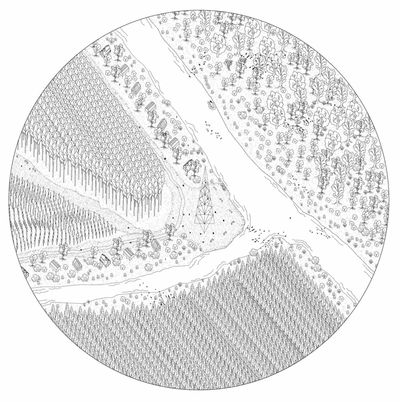Ada Čaplja Heron Foreland Embankment: Securing Vital River SpaceMarco Busarello and Raja Stettler

On the northern embankment of the Danube River, facing the Kalemegdan Fortress and New Belgrade, is a narrow strip of wetland forest that together with the Great War Island is considered the green heart of the city. As a natural river landscape it alleviates flooding and forms a vital ecological corridor through the city as a significant bird and fish habitat. Lying between the river and the main levee separating the floodable embankment from the agricultural bog of the Pačenvački Rit this long stretch of forested land also protects Belgrade from high winds. Poplar trees have been planted here for decades by the cardboard and paper industry. The construction of a dam further downriver stabilised the water level in Belgrade and sedimentation created a strip of wetlands on the northern shore. Two large bridges that cross this strip of land connect it to the city and the growing suburbs of Third Belgrade. Viewed from afar, there are few signs of human occupancy within this continuous forest, but it facilitates flows of essential materials and resources. The gravel industry that dredges the riverbed deposits collect material at several locations along the shore to be processed and transported overland. The extensive poplar tree nurseries growing in the humid soils are harvested for the construction and paper industry. The few roads leading to the shore are lined with informal houses on stilts—a weekend retreat for the local population. Amidst these anthropogenic influences, the wetlands are also an important habitat for indigenous and migrating birds, which feed on fish in the shallow waters. The white heron (Bela Caplja), indigenous to the area, has become a symbol for the grassroots campaign against plans to urbanise the Foreland further.

Vital green river belt for non-humans and humans.
Although the current city plan protects the Foreland as a “durable good” and an “ecological network of international importance” and managed on the state level by the state enterprise Srbijašume (Serbian national forestry company), the Foreland is under threat from development. Some of the developer’s proposals include the transformation of the wetland for leisure use, or. as a more radical preservationist strategy, the development of only seasonal settlements and recreational areas on the island. Since the area has also been considered a possible location for the construction of a new port, which would threaten the vital biodiversity found there, the project aims to secure the Heron Foreland embankment as an integral ecological component to the broader Danube River system. Further, strategies to revitalise the system, to renature the landscape, and to repair parts of the already sealed coastline, are explored. The work focuses on small scale interventions that allow new synergies among the diverging interests in nature, leisure, and industry.


